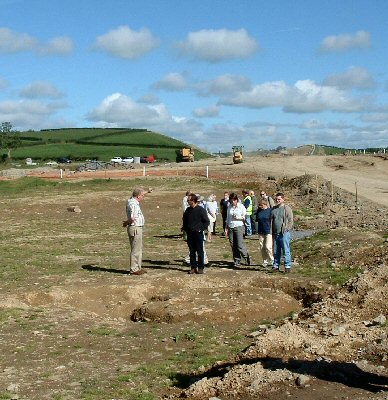Five great roads emanated from the Hill of Tara in Meath (once again in the news as Bertie’s government controversially determines to drive a motorway through the vicinity!) to the rest of Ireland. The northern-bound road, the Slighe Miodluachra, meaning the way of the middle rushy place, was well-named certainly as it traversed the Gap of the North at the townlands of Carrickbroad (the robber’s rock) and Edenappa. This is the location of Kilnasaggart.
I await with interest the publication of my friend Francis Xaviar McCorry’s forthcoming book on the subject. I stand to be corrected but meanwhile I conjecture the following (rough) route.
This road ran from Tara through Slane and then to the Moyry Pass (our old alternative road to Dublin before we had the modern motorway!). It may have veered westward at this point towards Old Killeavy Churches before branching, one route going towards Emania (Armagh) via Ballynalack/Sturgan and Bellecks, the other turning east towards Iur Cinn Tragha (Newry) which it possibly entered (skirting the Bernish) via today’s Doran’s Hill.
From there it possibly continued to (modern terms now used) Loughbrickland, Banbridge, Donacloney, Moira and Crumlin. (The reader will note that this is our modern route to the International Airport). From Crumlin it went via Ballymena and the foot of Slemish to North Antrim.
This road was possibly taken by Saint Patrick on his escape from Slemish, to Newrathbridge in Wicklow whence he sailed to France. When he returned as Bishop on his mission he would again have used this road. It is told that in 445 A.D. he stopped with Machta of Muirthemhne, Louth and blessed him and his nine-year-old daughter whom he prophesied would later achieve acclaim for her saintliness. As indeed she did, Saint Moninna of Killeavy.
An old overgrown road runs part of the way parallel to the north-west bound modern tarmac road leading to Killeavy Old Churches. It would be wrong to confuse this with the ancient way. It belonged instead to the Seavers of Killeavy Castle in fairly modern times. Jonathan, the most notorious of these is said to have taken stones from the adjacent Clonlum Court Grave in the building of his castle and estate; a crime which local folklore would have it, he was justly punished for in later life!
